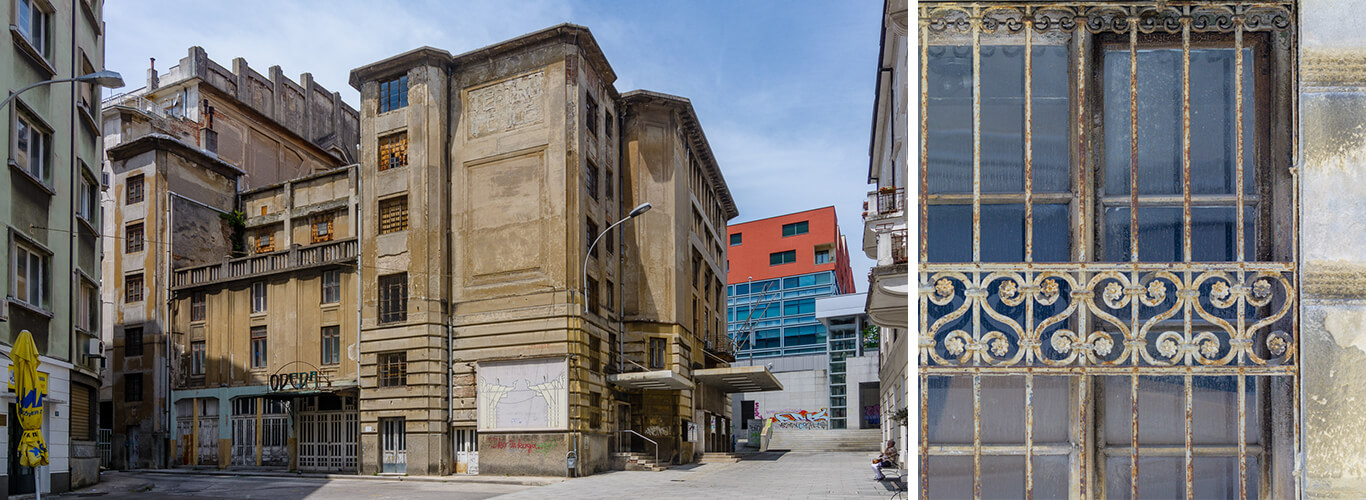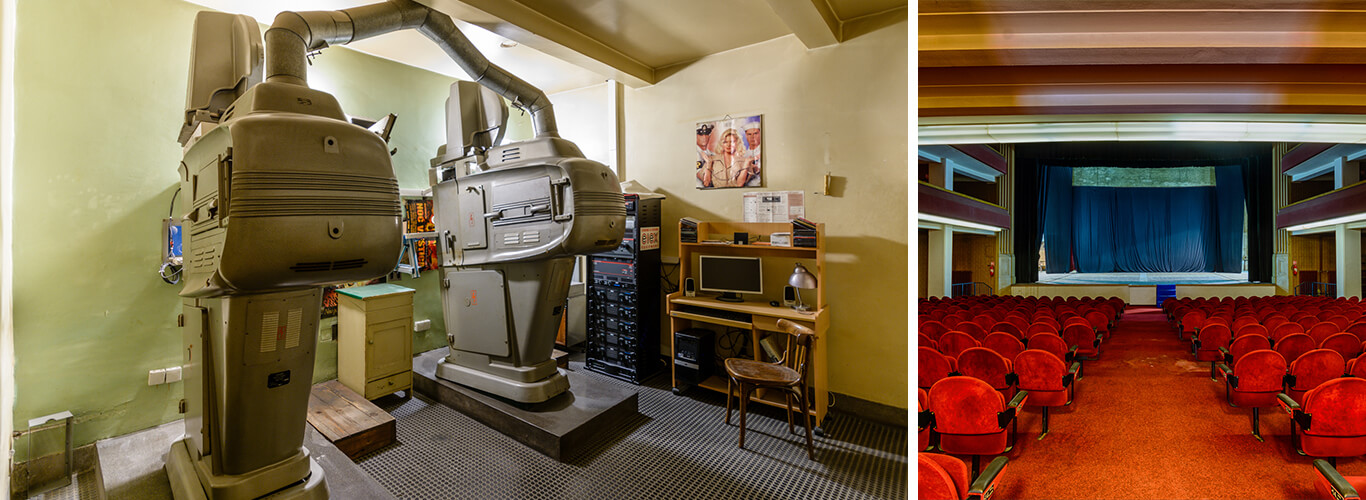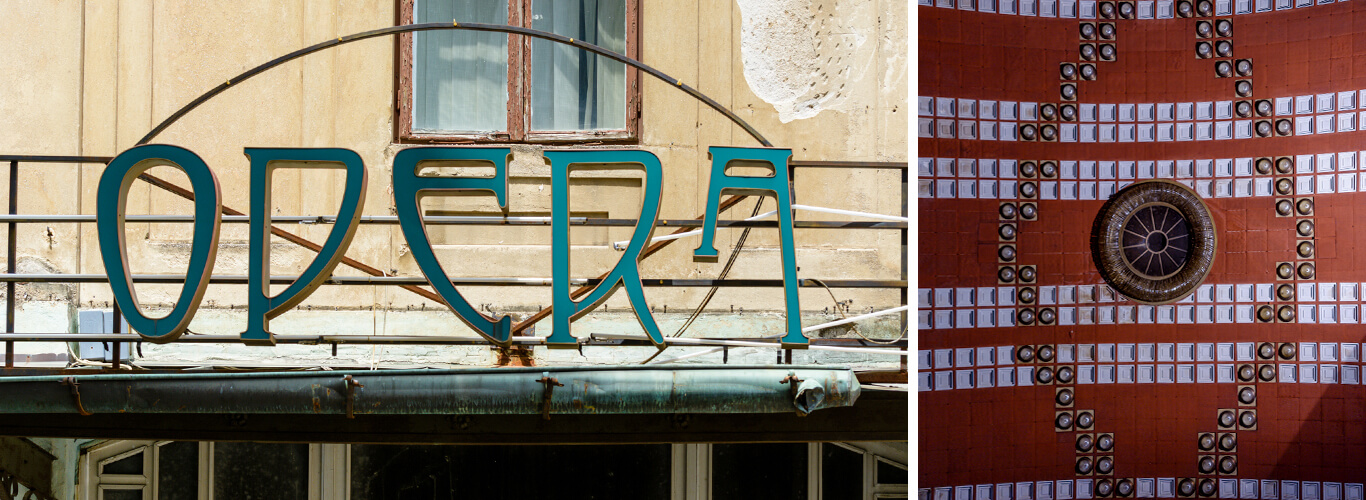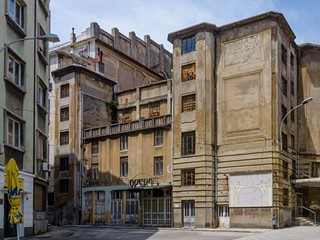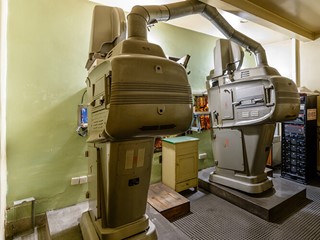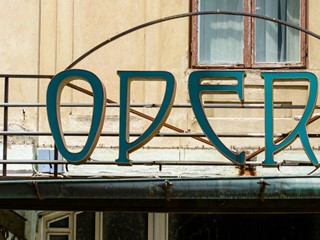Theatre Fenice
address: 13 Dolac StreetPeriod: Secession/Art Noveau
Kind: Immovable material heritage
Century: 20
Year: 1914
Purpose: cultural
The Theatre Fenice was built in 1914 at the site of the former open theatre, according to the conceptual design by Eugenio Caligei, partially altered by Theodor Träxler.
Owing to the war and the lack of financial support, the conceptual design of a cultural centre (building of a theatre, casino, concert hall) was reduced to only a modern theatre whose load-bearing structure is made of reinforced concrete.
The theatre could take two thousand viewers, and consists of the floor, the gallery and two levels of loggias. Companies and workshops from Rijeka, Vienna, Trieste and Budapest worked on the construction of the theatre, while the First Rijeka Parquet Factory was responsible for setting the parquet in the theatre and the hall under the floor. Many technical novelties were used in construction, reinforced concrete constructions and a system of trains for scene management.
The south façade was added in 1922 according to the project by Giovanni Rubinich. After the construction, the main entrance was reconstructed and the hall was rearranged
Valorization:
Although the theatre is not in use today, the building has culturological value considering that is preserves the memory of an almost one hundred year old cultural-artistic activity which was held there. The Theatre Fenice is included in the List of Protected Cultural Goods of the Repubic of Croatia Register of Cultural Goods.
Bibliography:
Arhitektura secesije u Rijeci, ed. Daina Glavočić, MMSU, Rijeka, 2007.
Glavočić, Daina, Arhitektura historicizma u Rijeci: 1845. – 1900.: arhitektura i urbanizam, MMSU, Rijeka, 2001.
Glavočić, Daina, Lozzi Barković, Julija and Rotim Malvić, Jasna, Sesecijska arhitektura – vodič kroz Rijeku, Association of Art Historians of Rijeka, Istria and the Croatian Littoral, Rijeka, 2011.
Lozzi Barković, Julija, Arhitektura historicizma u Hrvatskom primorju i Istri, Museum of Arts and Crafts, Zagreb, 2000.
Lozzi Barković, Julija, Secesija u arhitekturi Rijeke,Publishing Centre Rijeka, Rijeka, 2010.
Matejčić, Radmila, Kako čitati grad, Publishing Centre Rijeka, Rijeka, 1990.
Palinić, Nana, Riječka kazališta – nastanak, kontinuitet i značenje kazališnih zgrada i scenskih prostora u razvitku urbane strukture grada, University of Rijeka Faculty of Civil Engineering, Rijeka, 2016.

